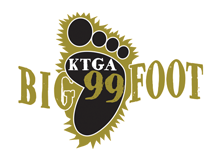August 26, 2022 |
The Grand Encampment Musuem is fired up over their new smelter diorama.
GEM volunteers have combed through over a century of data to piece together a snapshot of the area’s mining past.
On Wednesday morning, a group of GEM volunteers and history buffs trekked to the old smelter site on the edge of the Encampment River. They were given a tour of the grounds by Andy Peryam, a museum volunteer, and Dr. Ron Schmiermund, a geologist from Denver. Standing in front of the crumbling concrete remains, Peryam, painted a picture of the past.
Audio PlayerPictured above:
The life of the mine was short. By the 1950’s the area had become overgrown. Local kids used the decaying foundations as a playground. Peryam told the crowd about how he used to play in the ruins when he was a boy.
Audio PlayerPeryam is now a volunteer at the Grand Encampment Museum where he does research and makes dioramas. One of his earlier works was a model of the tramway that connected the Ferris-Haggerty mine to the smelter in town. This new diorama will join it as a permanent display.
With the help of Jerry Anderson, Anita Morris, and Vicky Ward, Peryam was able to put together the most detailed and accurate depiction of the smelter site as it looked during its heyday. The 1:148 scale model took more than seven months to build. It shows the powerhouse, the smelter itself, and several out-buildings as they appeared in 1903.
The diorama is like traveling through time. The realistic, birds-eye view it provides connects people to the past. While the buildings may be long gone, the diorama allows them to live on in a three-dimensional representation.
Only a few pictures exist. Other documentation is hard to find. What we know is that the smelter was a cavernous structure built on the hillside soaring over 100 feet into the sky it could be seen for miles around.
Audio PlayerPeryam said that the smelter was built quickly, in only a matter of months, and ownership passed through many hands.
Audio PlayerEarning his doctorate from the Colorado School of Mines in geochemistry, Dr. Schmiermund is the current president of Economic & Environmental Geochemistry, Inc., a Lakewood, Colorado-based environmental services company. He said the smelter was cutting edge technology for its time.
Audio PlayerThis facility used hydroelectric power. Five six-foot-tall water wheels were turned by the Encampment River, generating electricity. Standing by what remains of the powerhouse, Peryam said the electricity was shared with the town.
Audio PlayerThe original smelter burnt down in 1906. Peryam says that the fire was supposedly caused by a caretaker’s heating stove. All of the buildings were made of wood so the fire spread quickly and destroyed much of the equipment.
Audio PlayerThe facility was rebuilt in about nine months only to burn down again in 1907. It was rebuilt again only to burn down a third time in 1912. With the closing of the large mines, the copper boom was done and the site would stay operational only as a hydroelectric plant until 1917.
During the diorama dedication ceremony emotions ran high as Museum Director Tim Nicklas, presented Peryam and his wife Susan, with a Volunteer of the Year award.
Audio PlayerThe award consisted of a plaque and a painting of the smelter site.
The diorama is on display in the Grand Encampment Museum’s Doc Culleton Memorial Building.













